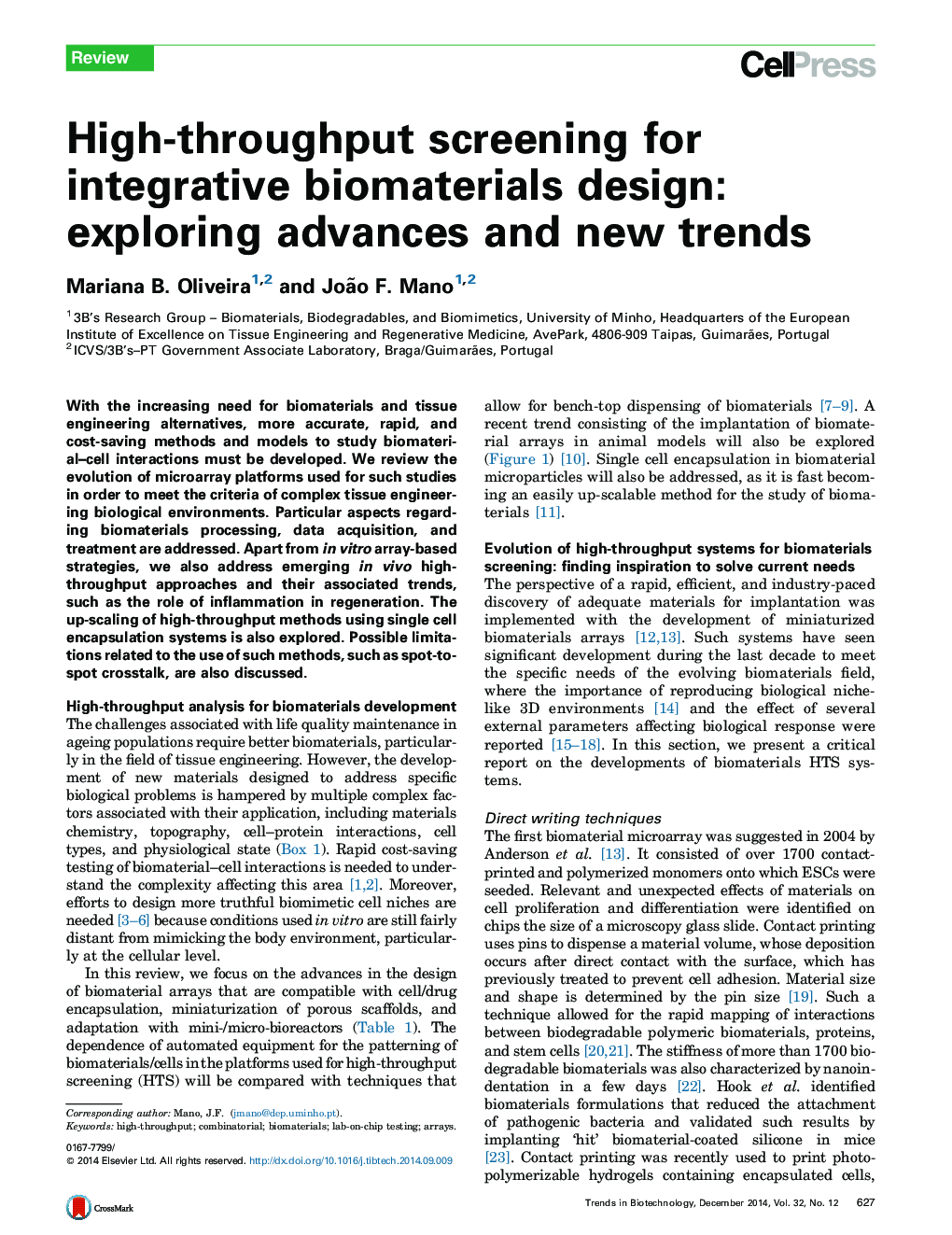| Article ID | Journal | Published Year | Pages | File Type |
|---|---|---|---|---|
| 36935 | Trends in Biotechnology | 2014 | 10 Pages |
•Advances in high-throughput methods for biomaterials development.•Discussion of upgrades in the field for the adaptation of array-based chips for tissue engineering.•New factors that must be taken into consideration in the development of more optimized chips.
With the increasing need for biomaterials and tissue engineering alternatives, more accurate, rapid, and cost-saving methods and models to study biomaterial–cell interactions must be developed. We review the evolution of microarray platforms used for such studies in order to meet the criteria of complex tissue engineering biological environments. Particular aspects regarding biomaterials processing, data acquisition, and treatment are addressed. Apart from in vitro array-based strategies, we also address emerging in vivo high-throughput approaches and their associated trends, such as the role of inflammation in regeneration. The up-scaling of high-throughput methods using single cell encapsulation systems is also explored. Possible limitations related to the use of such methods, such as spot-to-spot crosstalk, are also discussed.
